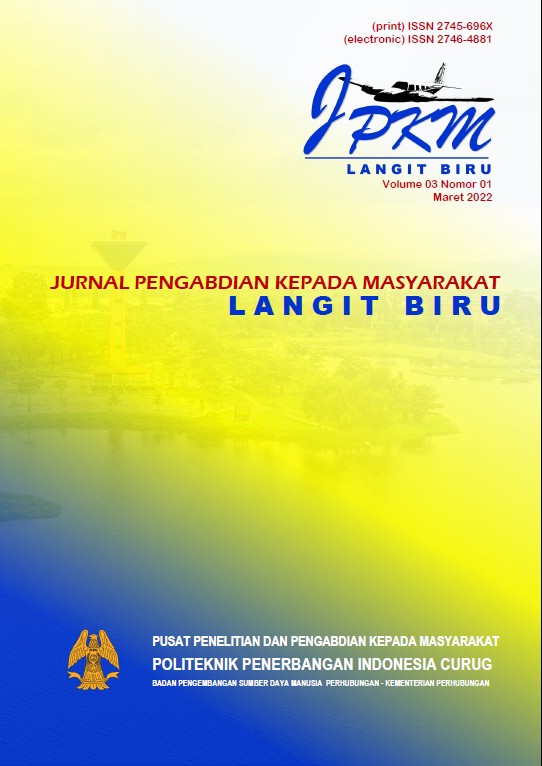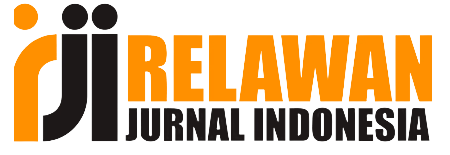Pendampingan Pemeliharaan Drainase di Sungai Lekso Kota Blitar
Abstract
Drainage on the Lekso River in Blitar City is experiencing various problems, such as clogged channels, damage to infrastructure, and accumulation of garbage. Based on these problems, community service activities were carried out with the aim of assisting Drainage Maintenance on the Lekso River, Blitar City. The method used in this service is identification of drainage problems and needs through field surveys and consultations with relevant authorities and outreach to the community regarding the importance of maintaining good drainage and environmental management. As a result of this community service, the community receives training and education assistance for the community regarding proper drainage maintenance techniques, such as channel cleaning, infrastructure repair, and waste management. In addition, the local community carried out drainage cleaning and repair activities together with the guidance and supervision of the community service team.
References
Armitage, R., & Nellums, L. B. (2020). Water, climate change, and COVID-19: prioritising those in water-stressed settings. The Lancet Planetary Health, 4(5), e175. https://doi.org/10.1016/S2542-5196(20)30084-X
Bernard, Barasa, and A. J. (2020). “Contribution of Rainfall on Rooftop Rainwater Harvesting and Saving on the Slopes of Mt. Elgon, East Africa.” The Scientific World Journal, 1–11.
Brauer, Michael, Jeff T. Zhao, Fiona B. Bennitt, and J. D. S. (2020). “Global Access to Handwashing: Implications for COVID-19 Control in Low-Income Countries.” Environmental Health Perspectives, 128(5), 057005.
Brown, J., & Sobsey, M. D. (2010). Microbiological effectiveness of locally produced ceramic filters for drinking water treatment in Cambodia. Journal of Water and Health, 8(1), 1–10. https://doi.org/10.2166/wh.2009.007
Cristiano, E., Farris, S., Deidda, R., & Viola, F. (2021). Comparison of blue-green solutions for urban flood mitigation: A multi-city large-scale analysis. PLOS ONE, 16(1), 1–15. https://doi.org/10.1371/journal.pone.0246429
Farrossandy, A. I., Widiarti, W. Y., & Badriani, R. E. (2022). Evaluasi Saluran Drainase Jalan Manggis Kecamatan Patrang Kabupaten Jember. Jurnal Teknik Pengairan, 13(2), 141–158. https://doi.org/10.21776/ub.pengairan.2022.013.02.02
Fifi Fata’tiatul Hidayah, Lailatul Qodriyah Agne Verawati, H. W. (2020). Pemetaan Saluran Irigasi sebagai Upaya Penyediaan Air bagi Kebutuhan Pertanian (Studi Kasus: Desa Sindangsari, Kecamatan Ciranjang, Kabupaten Cianjur). Jurnal Pusat Inovasi Masyarakat, 2(4), 627–631.
Hardjosuprapto, M. (1998). Drainase Perkotaan, Volume 1. Bandung: Penerbit ITB.
Haryono, M. S. (1999). Drainase Perkotaan. Jakarta: Pradnya Paramitha.
Muhamad Taufik, Agung Setiawan, I. P. (2020). Analisis Sistem Drainase Untuk Mengatasi Banjir. Surya Beton, 4(2), 17–24.
Soemarto, C. (1999). Hidrologi Teknik. Jakarta: Erlangga.
Sri Harto, B. (2000). Analisis Hidrologi. Jakarta: Gramedia Pustaka Utama.
Suripin. (2004). Sistem Drainase Perkotaan yang Berkelanjutan. Yogyakarta: Andi.
Triatmodjo, B. (2008). Hidrologi Terapan. Yogyakarta: Beta Offset.
Copyright (c) 2022 Santi Sari santisari

This work is licensed under a Creative Commons Attribution-NonCommercial-NoDerivatives 4.0 International License.


5.png)
.png)
.png)
.png)




